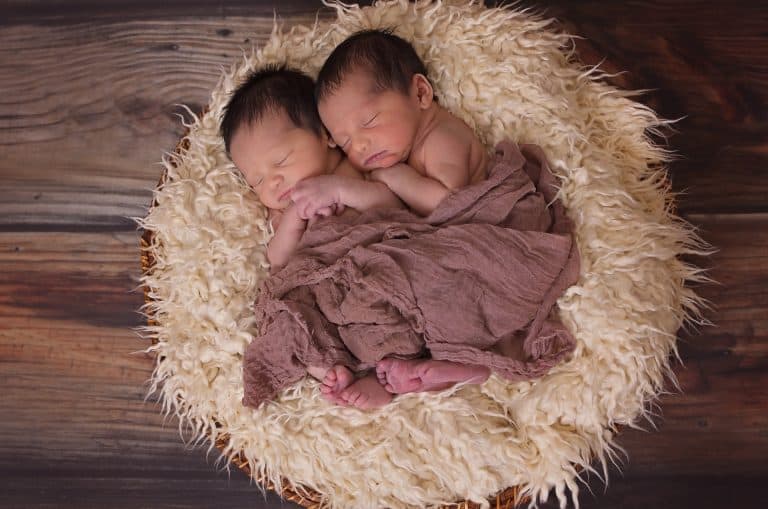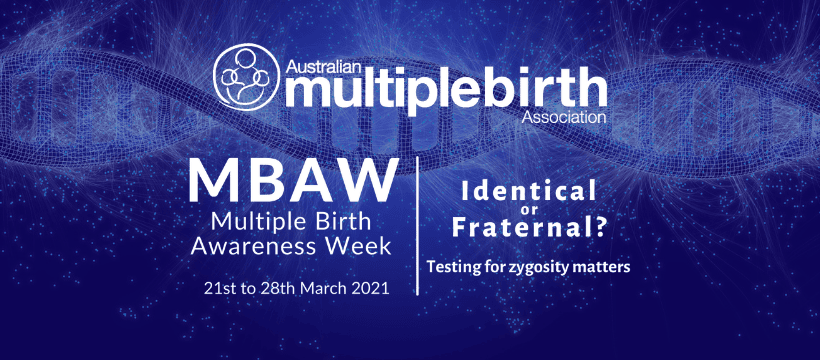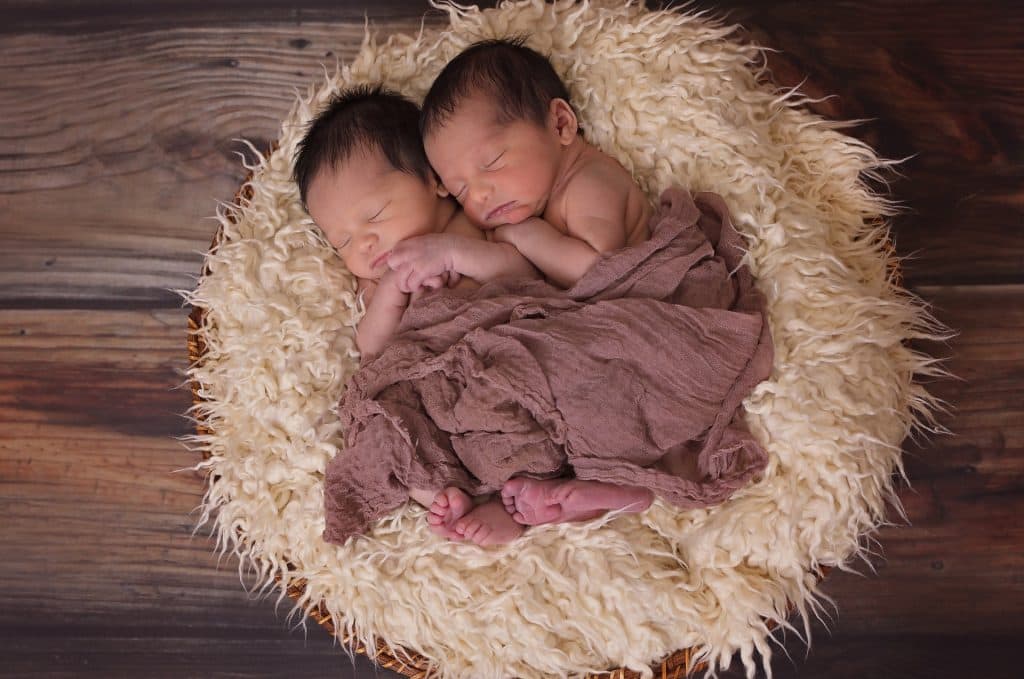

The theme for Multiple Birth Awareness Week (MBAW) 2021 is “Identical or Fraternal? Testing for zygosity matters“. We’ve put together some information from the Australian Multiple Birth Association, plus a Melville Mum shares her story of being a mum to identical twins.
Australian Multiple Birth Association
AMBA launched their annual Multiple Birth Awareness Week as a national Australian campaign to raise awareness around, and draw attention to, the unique realities for multiple birth families and how active advocacy, positive education and engaged communities can contribute to enabling positive health outcomes for our families.
Their mission is to enable positive health outcomes, awareness and equality for multiple birth families through advocacy, education and community. They aim to provide support from ‘those who know’, by providing practical support.
Twin Types
In a nutshell, the two most common types of twins are identical and fraternal. Sometimes there are obvious ways to tell which type is what, but there are some complexities with determining the zygosity of same-sex twins.
Twins and multiples are usually described according to:
- how many eggs they develop from – one or two
- if they share a placenta in their mother’s womb

Identical or Fraternal
One of the most common questions asked of a multiple birth family is “are they identical or fraternal?” It seems like an innocent enough question, and the answer has often been based on using the number of placentas as a reference, but quite often, parents are misinformed during pregnancy and at birth regarding their children’s zygosity because prenatal scans that display one or two placentas are not a reliable means of determining whether twins are identical or not.
If twins are the same sex and each have a placenta, or if there is doubt about the type of placenta, they could be identical – or non-identical twins. The best way to be certain is to do a zygosity test. Testing zygosity provides scientific evidence to determine whether twins, triplets or quadruplets, etc. are identical (monozygotic or MZ) or non-identical (dizygotic or DZ) and identifies the type of cell union that occurred at the time of conception.
Why does zygosity matter?
Why does zygosity need to be determined at all? Identical twins are more likely than fraternal twins to get the same illness. If one of a pair of identical twins is diagnosed with a particular disease or health condition, like high blood pressure, the other twin should be checked for early symptoms. Because of their genetic make-up, identical twins will always be compatible for organ transplantation, if they ever need it. Fraternal twins are compatible only some of the time.
Knowledge about a twin pair’s zygosity can have many implications including:
- improving the bonding of twins
- understanding tissue compatibility in organ transplantation
- assessing disease risk
- the personal right to know your identity
- legal and educational reasons
- estimating the likelihood of the mother or close relatives giving birth to further sets of twins
- to avoid embarrassment when asked by family, friends and strangers
- eligibility for being involved in twin research
A Melville mum shares her story
From the Melville Mums Facebook group, we have a wonderful story from an amazing mum who has shared her journey with Identical Twins
“We found out we were pregnant with identical (monozygotic) twins pretty early at a 6-week dating scan. My husband couldn’t make it, so I had to ‘break the news’ to him over the phone while he was at work. He just laughed… slightly maniacally. He came to all the scans after that 😉
Our twins shared a placenta (monochorionic), making my pregnancy high risk for twin-to-twin transfusion syndrome and I was monitored from 16-weeks with an ultrasound every two weeks to keep an eye on things. Luckily it all progressed normally, and it was very reassuring having such regular ultrasounds.
Although my pregnancy was trouble-free, the girls were my first children so I didn’t really know what to expect — both a blessing and a curse! I didn’t know anyone else with multiples either, so I joined the Australian Multiple Birth Association and attended workshops with my husband to help prepare for the journey. We found it really helpful.
I chose to breastfeed Ava and Grace, but it wasn’t easy. I was extremely fortunate to find the Possums Clinic and Dr Pamela Douglas (based in Brisbane) in the early days, and as a bonus formed some lovely friendships with other mums also requiring support for breastfeeding and sleep. They all had singletons, which was actually great because they all showered me with praise just for getting out of the house to our catch-ups and really pumped me up! Finding people to support me with values that aligned with my own was invaluable.
As a twin mum, I guess the insensitive comments towards twins can really wear you down. Some comments hurt more than others, and mostly people are just trying to make conversation because they find twins intriguing. If I had a dollar for every time I heard “double trouble”… So many older ladies stop me to gush over the girls though, which is just lovely. If anyone makes an irritating comment nowadays, I find it so much easier to just ignore it and move on. I suppose people can have a really negative view on multiples in general and just think of all the hard aspects of it but, particularly as Ava and Grace get older, I just find the positives far outweigh the negatives! Watching the bond they have is so special and sometimes makes me jealous that I’m not part of their little gang, haha.
Having twins that are identical can also throw up another set of challenges in that people often struggle to treat them as their own people and struggle to differentiate the two. In an effort to help establish identities and personalities, I’ve never dressed them the same or referred to them as “The Twins”. And if you know identical twins, I’d suggest you try to make an effort to find out who is who (P.S. don’t ask “which is which” — they aren’t objects!) because they really are their own people with different personalities and separate identities. In saying that, I know it can be pretty hard to tell identical twins apart, but we will always appreciate the effort even if you get it wrong! Try to find something different about them and remember it. For example with my twins, Grace has a dimple and Ava doesn’t. As a mum, I also try and make this easier and tie blue bows in Grace’s hair and yellow in Ava’s for school so teachers and friends can tell them apart.
After the twins’ birth I experienced postpartum anxiety. I think a lot of it was due to my desire to ‘just get on with it’ and do things on my own — my advice to expectant and new twin mums would be to ask for help, any help! Also, we didn’t sleep well for the first 16 months and it was hard. We were lucky to have help available to us but I definitely wish I prioritised my rest more and if I did it all again, that’s what I’d do.
I try to be really positive about twins to new and expectant mums if I meet them, because no doubt they already have enough people telling them how hard it’s going to be! There are so many resources out there to help parents of multiples and as a society we need to be more positive about twins and multiples and do everything we can to support multiple birth families.”
Where to get support
If you have multiples (or you’re pregnant with twins, triplets or more) you can find some really great resources on the AMBA website, or join us in the Melville Mums Facebook group and meet other mums with multiples.